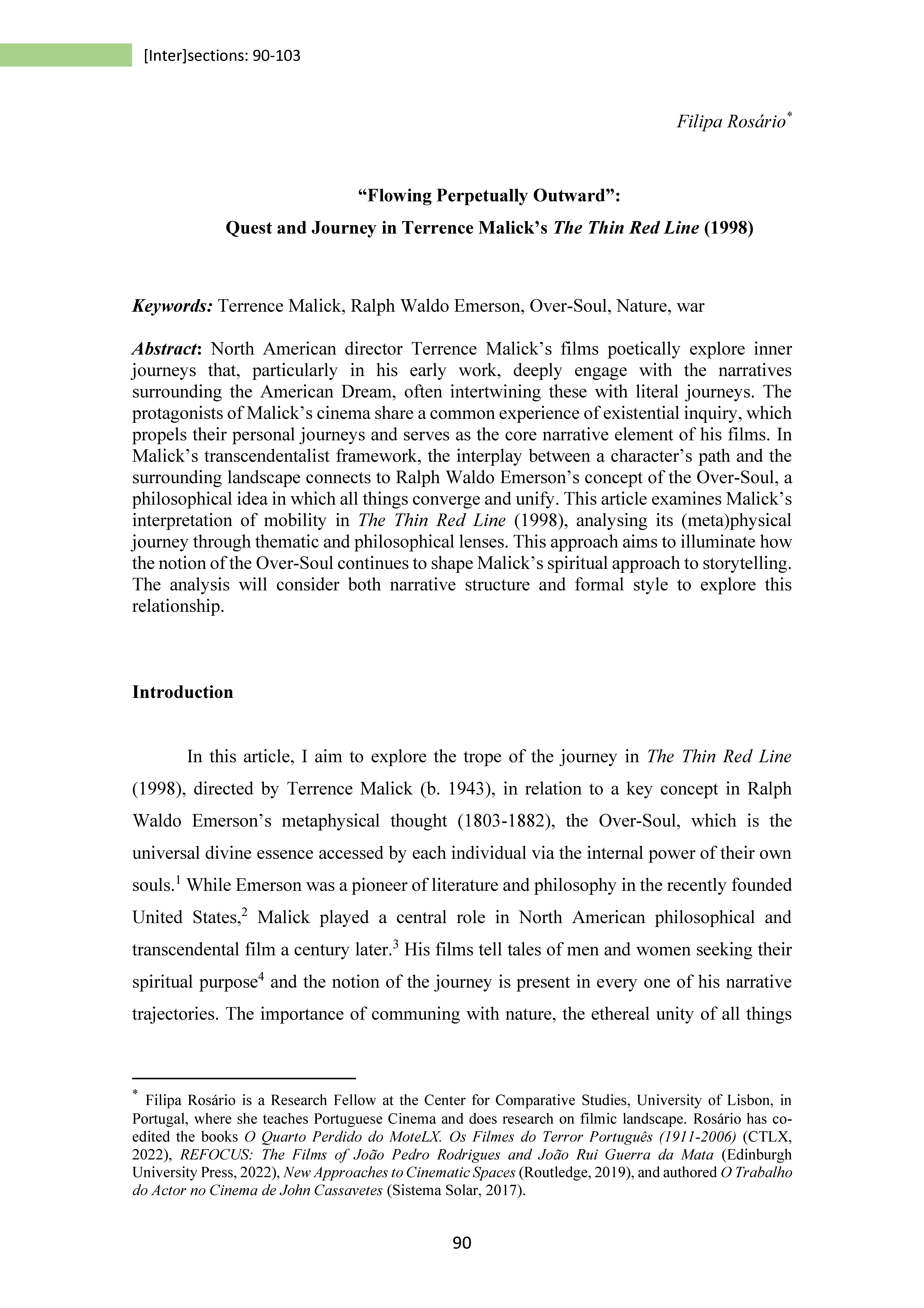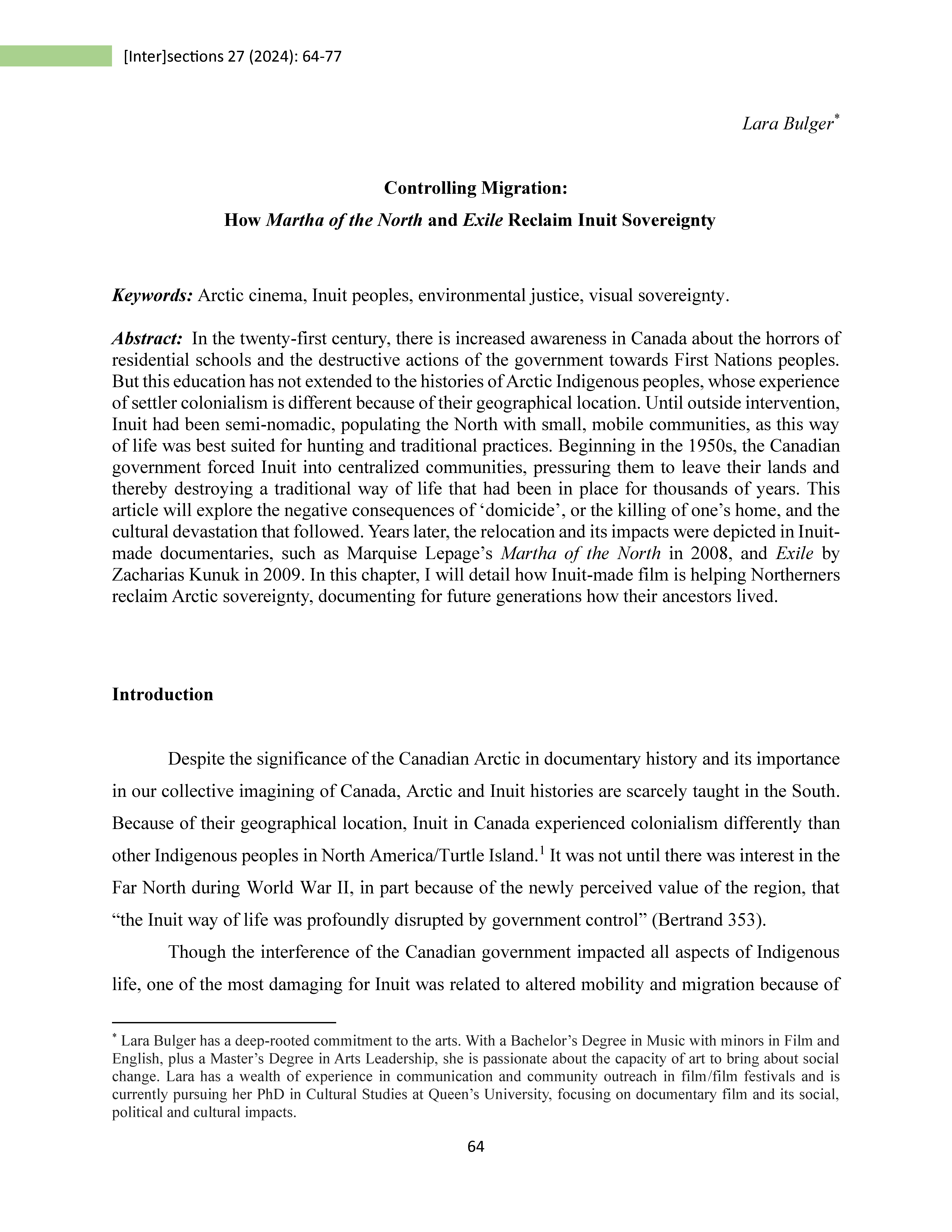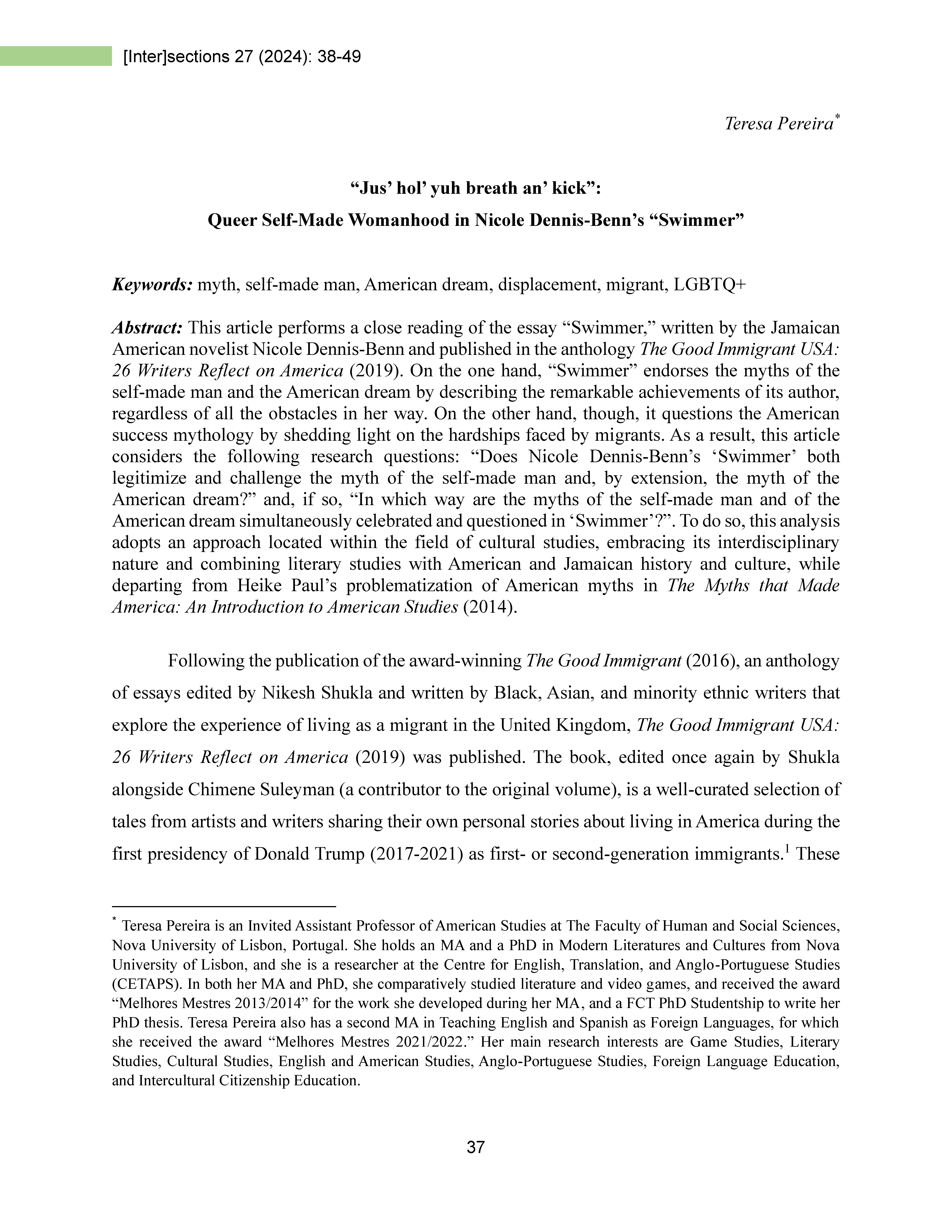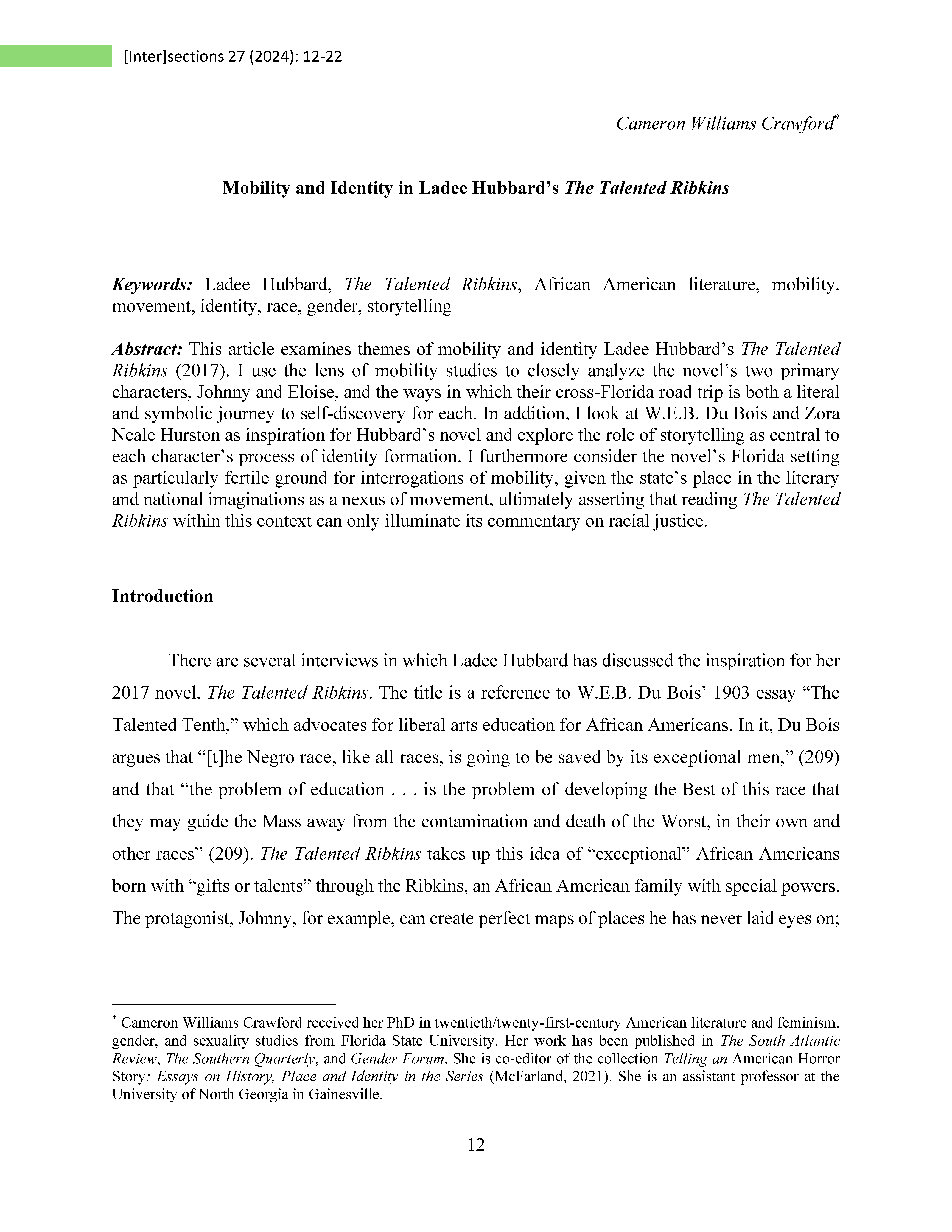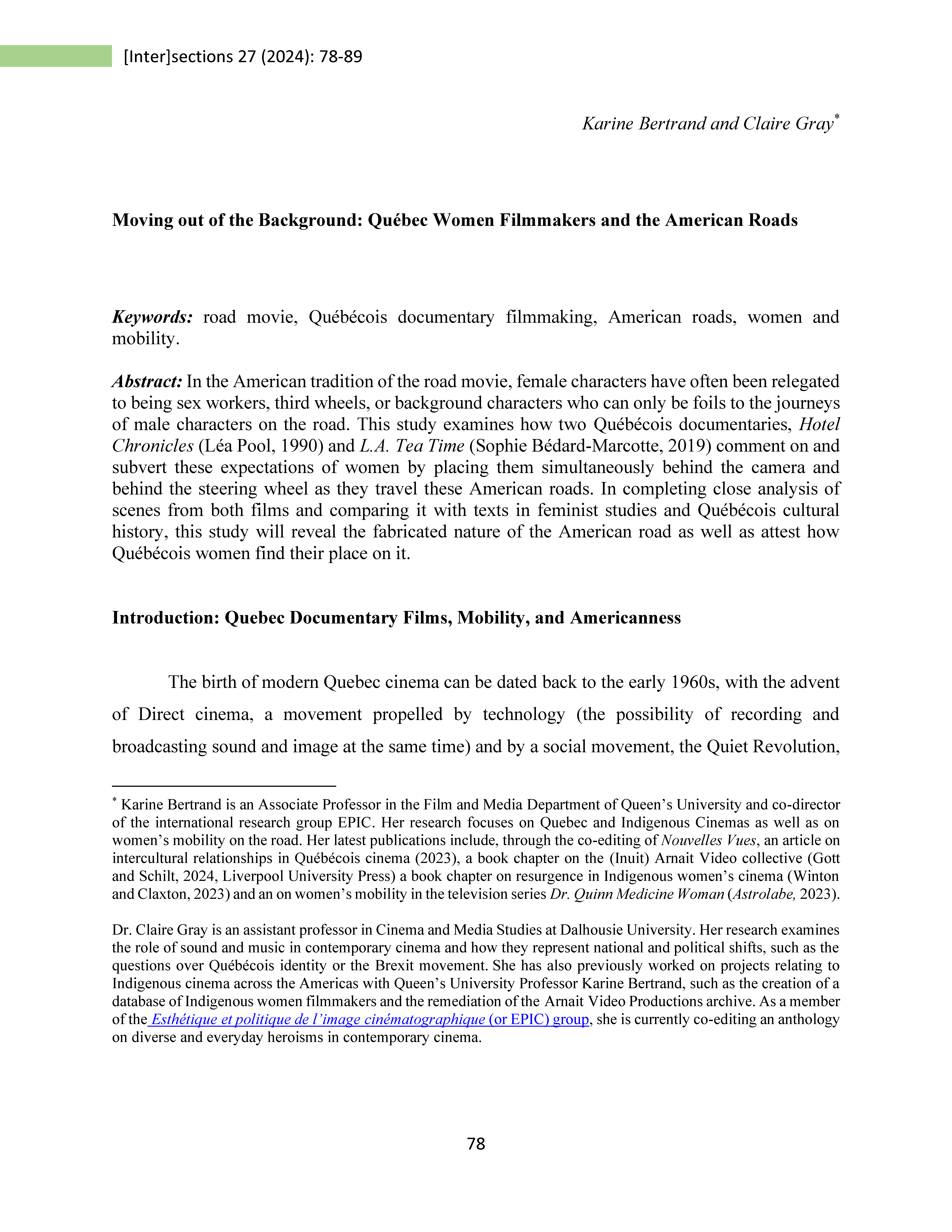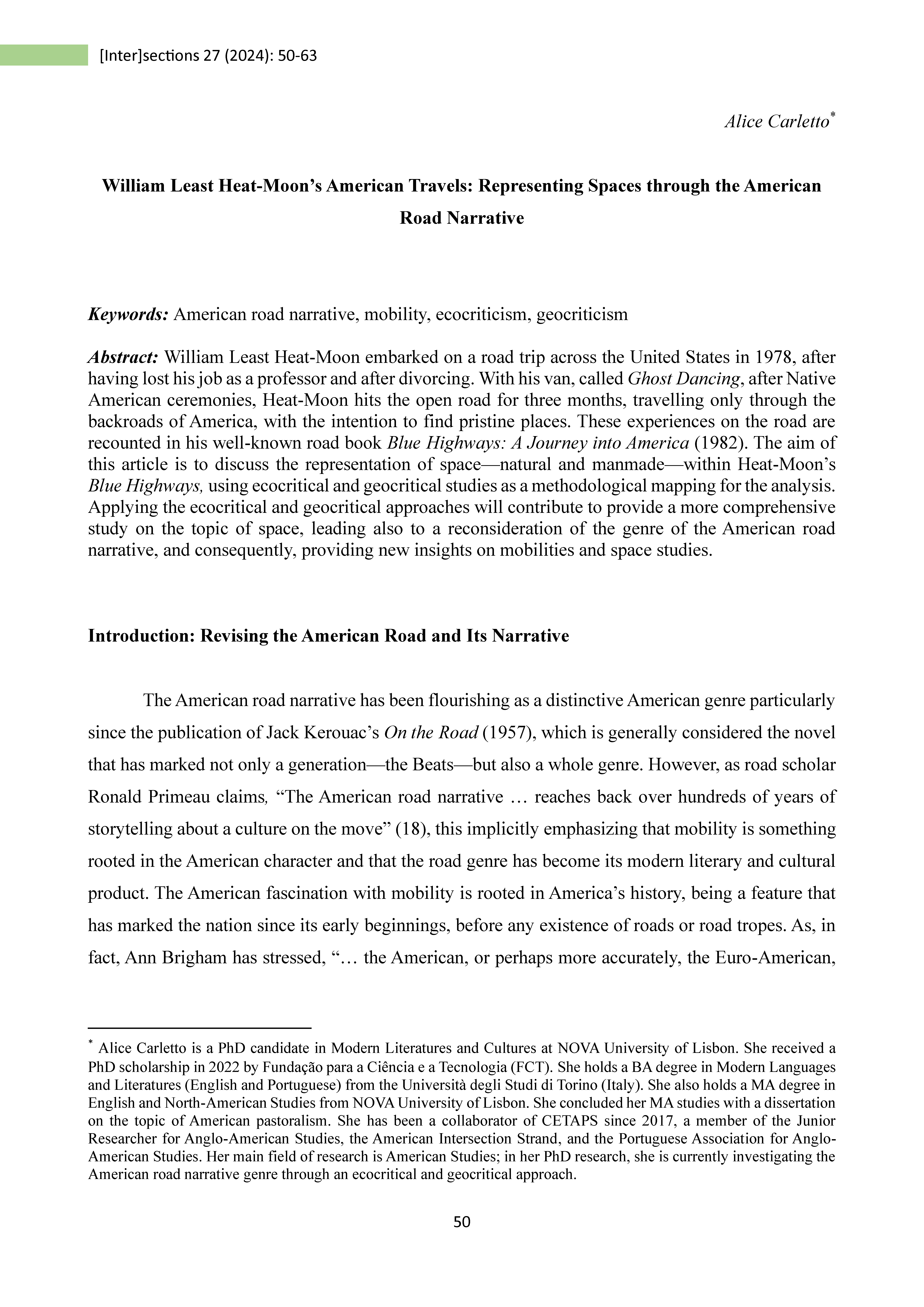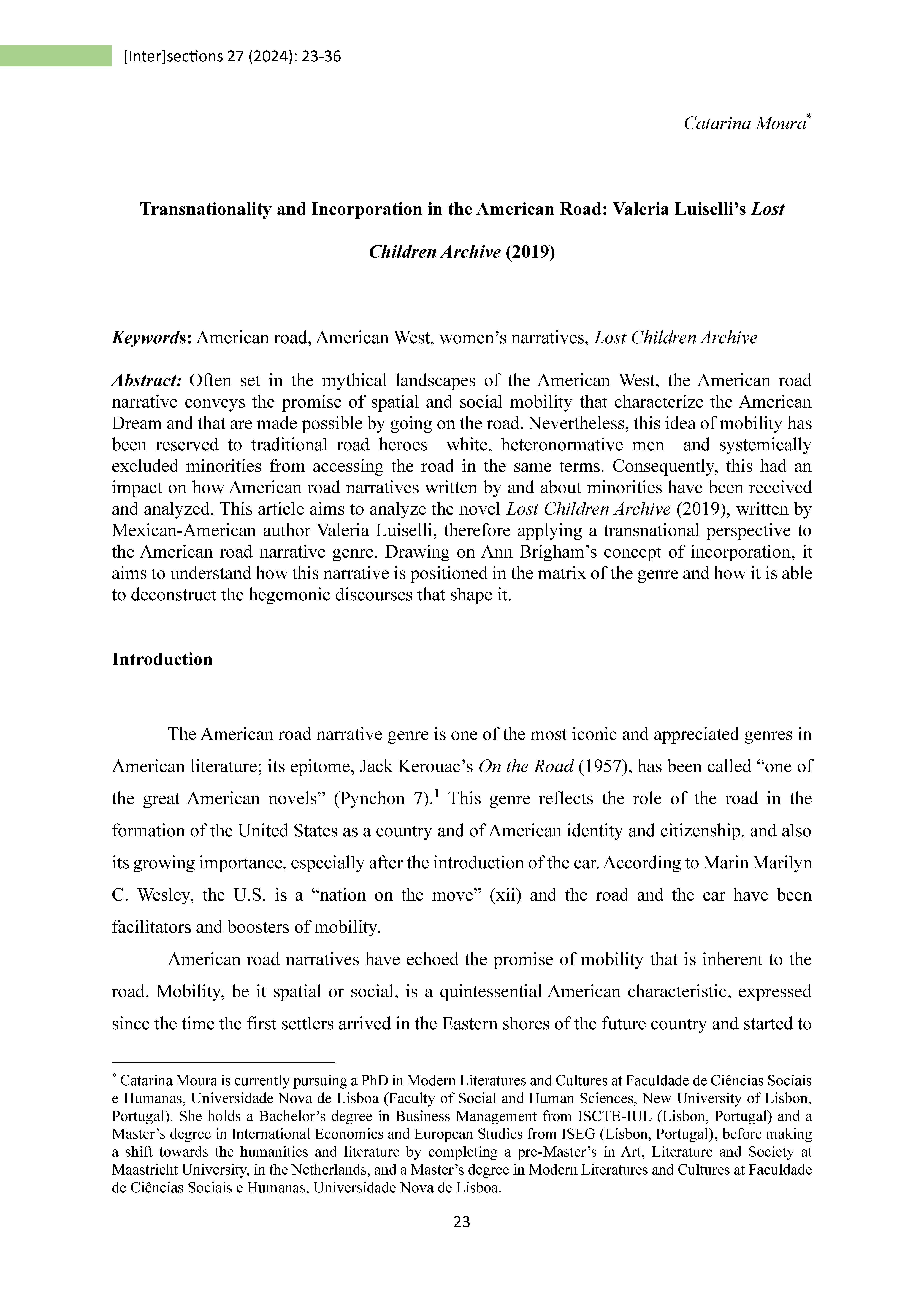About the Journal
[Inter]sections is the annual double-blind peer reviewed journal of American Studies at the University of Bucharest.
The language of the journal is English (US). Its first peer reviewed issue came out in 2009. From 2009 to 2012, it was a quarterly peer-reviewed publication.
Please note that [Inter]sections does not charge its authors (there are no article processing charges or submission charges).
Current Issue
Vol. 27 No. 1 (2024): MOBILITY AND AMERICAN (NON)FICTION

This special issue on “Mobility and American (Non)Fiction” was co-edited by José Duarte (School of Arts and Humanities, University of Lisbon) and Mihaela Precup (American Studies Program, University of Bucharest).
Published:
2025-02-06

